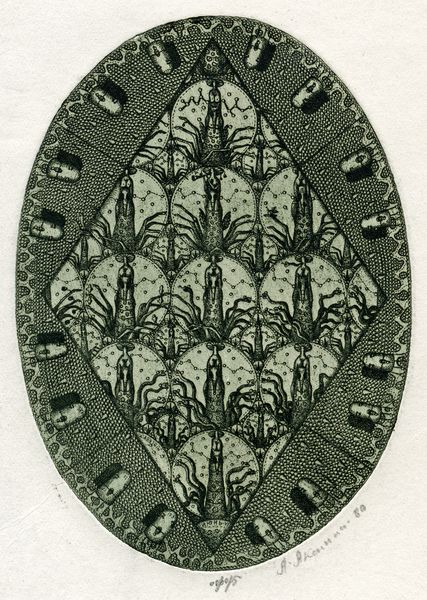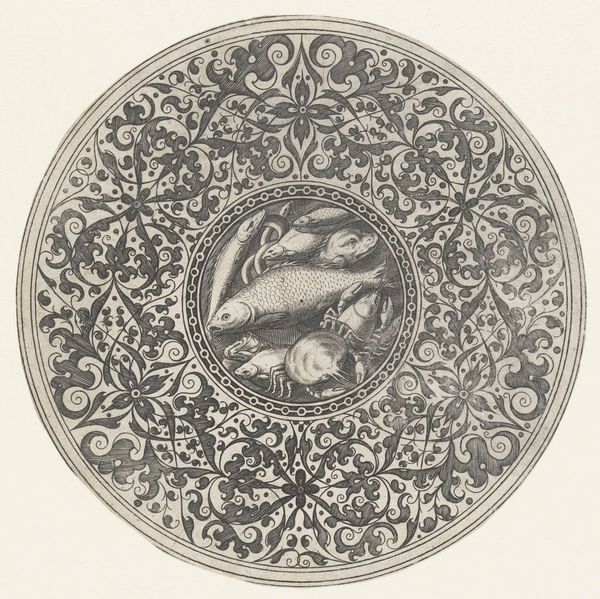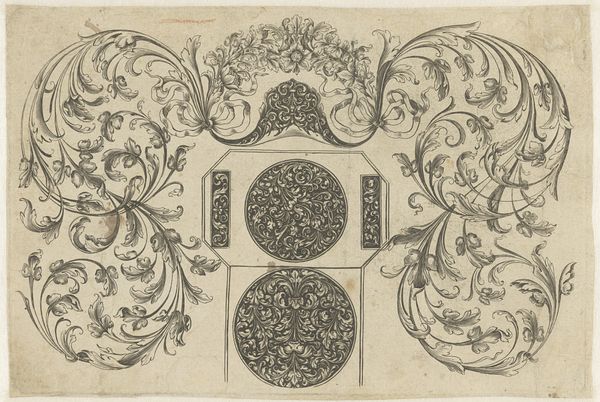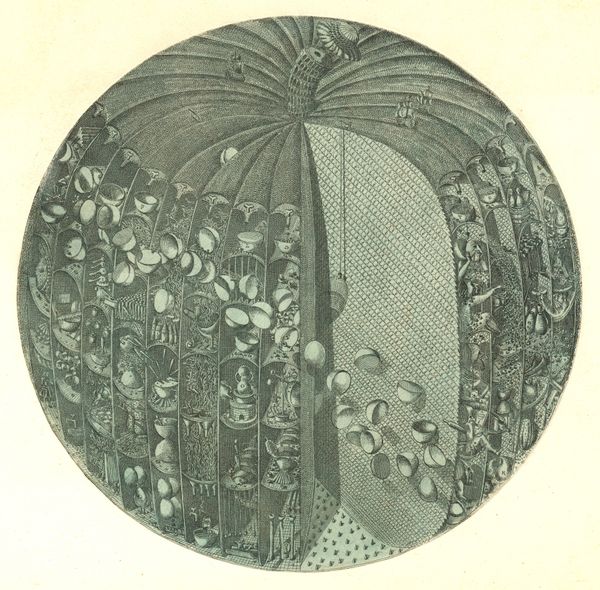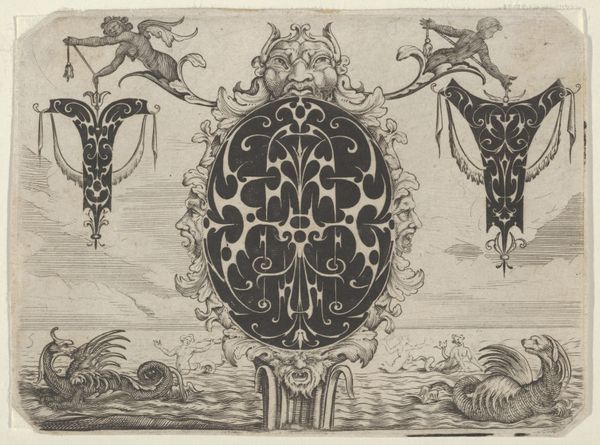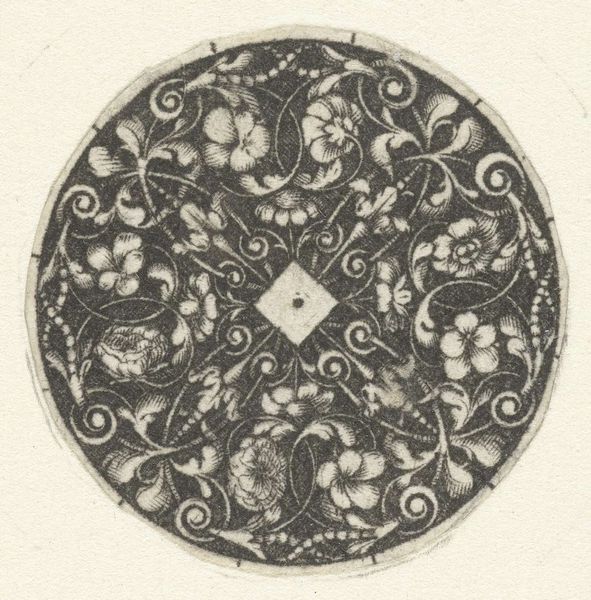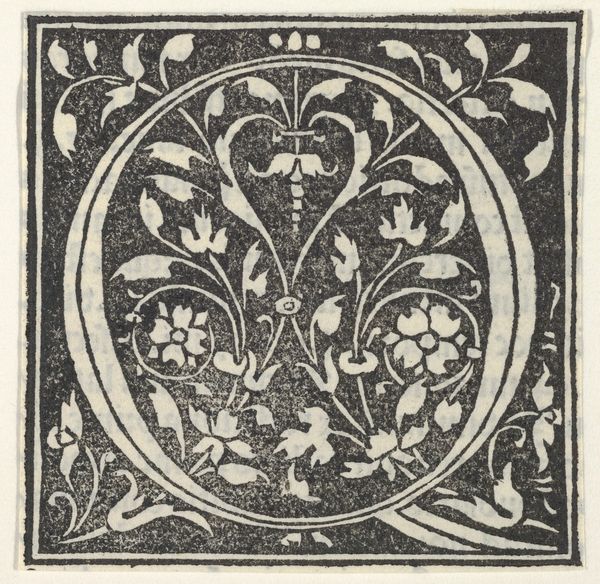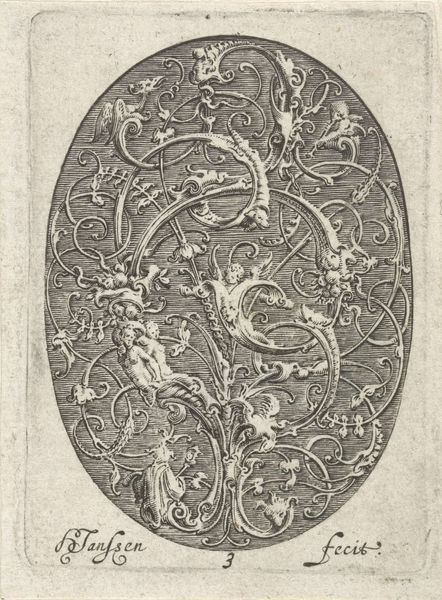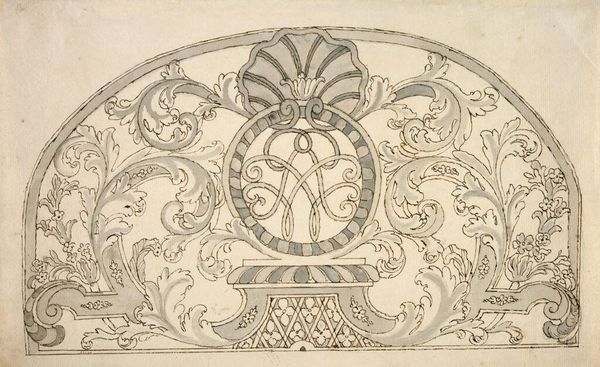
drawing, print, ink, engraving
#
pencil drawn
#
drawing
# print
#
old engraving style
#
ink
#
coloured pencil
#
geometric
#
engraving
#
pencil art
Copyright: Oleksandr Aksinin,Fair Use
Curator: Here we have "Exlibris G. Matuszaka" created in 1979 by Oleksandr Aksinin. It's a fascinating example of his engraving work, brimming with meticulously rendered details. What strikes you initially about this piece? Editor: Well, my first thought is that it reminds me of Escher, but with a slightly darker, more organic sensibility. There's a fantastical quality, a world contained within this circular frame that feels both incredibly intricate and strangely…melancholy? Curator: Melancholy, interesting. For me, the density of detail, the way he’s layered all these symbolic elements, feels more playful, almost a wink. Ex libris, of course, indicates this was designed as a bookplate. Think about that— a tiny, personal world meant to live inside a book. Editor: Yes, and the "personal world" aspect is key, right? Bookplates, traditionally, speak to ownership, but also to identity. I wonder, given Aksinin’s background, making art under Soviet restrictions, could this dense symbolism also function as a kind of coded resistance? The geometric shapes mixed with organic forms could be a commentary on imposed order versus natural chaos. Curator: That’s a compelling point. The almost obsessive detail could be seen as a form of reclaiming control, a small act of defiance in a world where expression was carefully monitored. The floating orbs, for example, feel like escaped thoughts, dreams rising above the rigid structure beneath. Editor: Exactly! And the fragmented fruits – look at those pomegranates! They're bisected, revealing their interiors, spilling their seeds. Perhaps they are suggestive of a deconstruction of ideas, an unraveling of imposed narratives. Considering Aksinin was working during a time when individual expression was often suppressed, the act of creation itself becomes inherently political. Curator: Absolutely, and it reminds me of something Milan Kundera wrote about laughter being a defense against a world taking itself too seriously. I see Aksinin's layering of detail here, that playfulness mixed with darker themes, almost as a visual echo of that sentiment. Editor: It makes you wonder about G. Matuszak, the owner of the book. What did they make of this intensely personal statement acting as their identifier? I think Aksinin gives us this intricate web of symbolism that asks more questions than it answers about the owner. Curator: A little seed of rebellion nestled inside the covers of a book. It’s fascinating to consider how a work like this transforms when we consider its historical context. Editor: It's a quiet revolution on a very small scale.
Comments
No comments
Be the first to comment and join the conversation on the ultimate creative platform.
